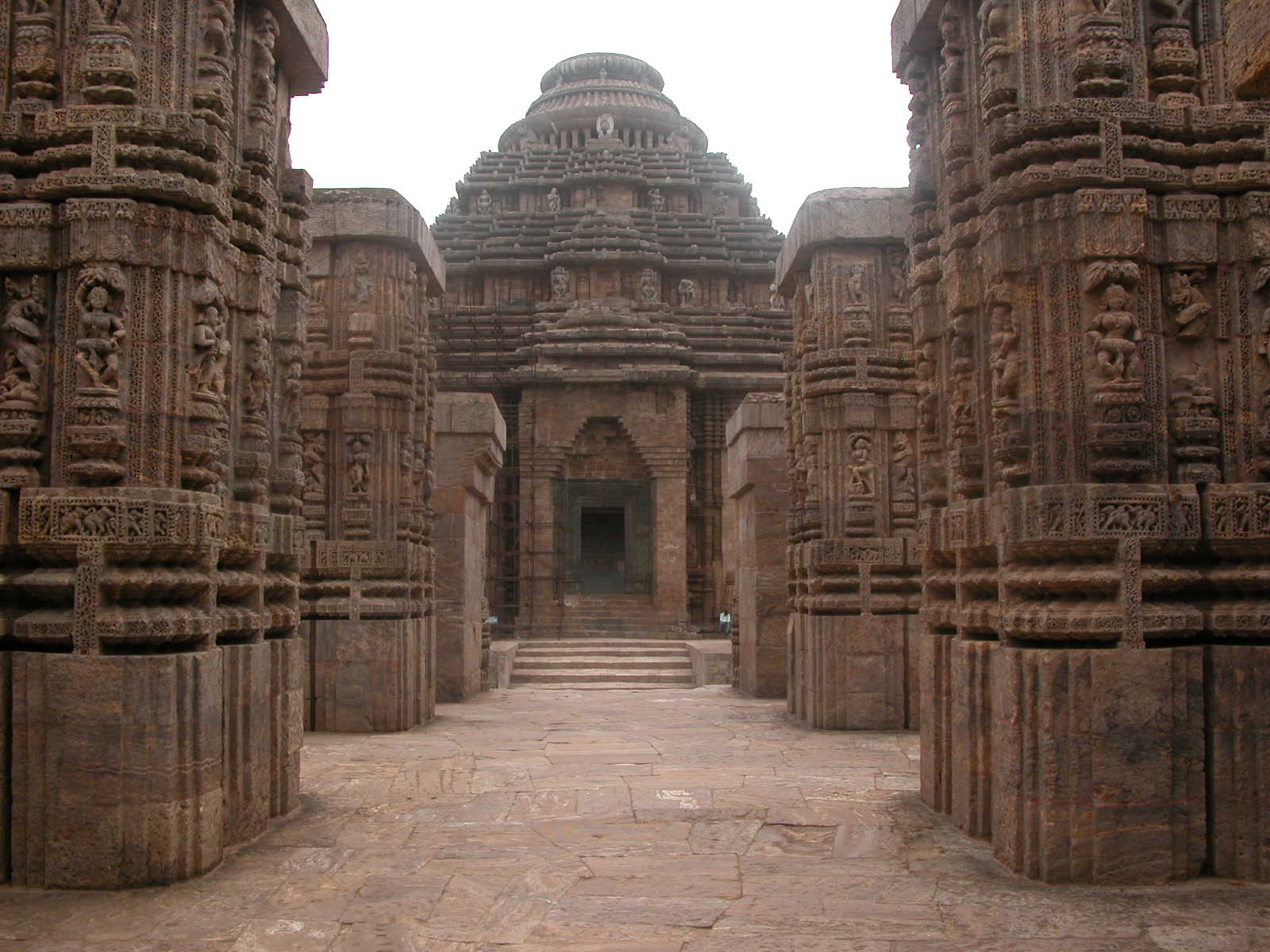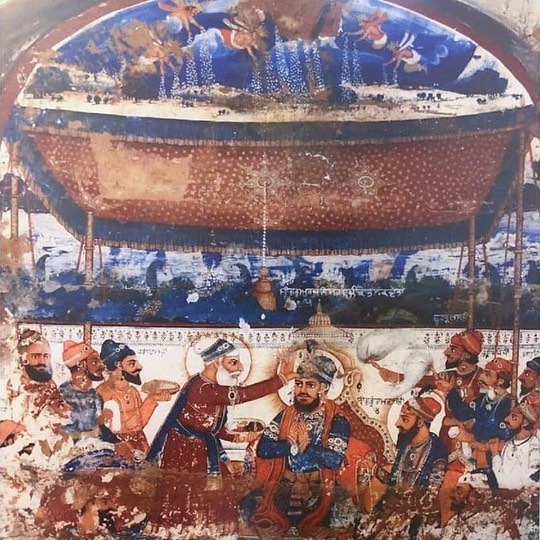|
Janamsakhis
The Janamsakhis (, IAST: , ), are popular hagiographies of Guru Nanak, the founder of Sikhism. Considered by scholars as semi-legendary biographies, they were based on a Sikh oral tradition of historical fact, homily, and legend, with the first ''janamsakhi'' were composed between 50 and 80 years after his death.Guru Nanak Encyclopaedia Britannica, Brian Duignan (2017) Many more were written in the 17th and 18th century. The largest ''Guru Nanak Prakash'', with about 9,700 verses, was written in the early 19th century by . The four ''janamsakhi'' traditions that have survived into the modern era ... [...More Info...] [...Related Items...] OR: [Wikipedia] [Google] [Baidu] |
Guru Nanak
Gurū Nānak (15 April 1469 – 22 September 1539; Gurmukhi: ਗੁਰੂ ਨਾਨਕ; pronunciation: , ), also known as ('Father Nanak'), was an Indian spiritual teacher, mystic and poet, who is regarded as the founder of Sikhism and is the first of the ten Sikh Gurus. Nanak is said to have travelled far and wide across Asia teaching people the message of '' Ik Onkar'' (), who dwells in every one of his creations and constitutes the eternal Truth. With this concept, he would set up a unique spiritual, social, and political platform based on equality, fraternal love, goodness, and virtue. Nanak's words are registered in the form of 974 poetic hymns, or '' shabda'', in the holy religious scripture of Sikhism, the Guru Granth Sahib, with some of the major prayers being the '' Japji Sahib'' (; ''ji'' and ''sahib'' are suffixes signifying respect); the '' Asa di Var'' ('Ballad of Hope'); and the '' Sidh Gosht'' ('Discussion with the Siddhas'). It is part of Sikh religious b ... [...More Info...] [...Related Items...] OR: [Wikipedia] [Google] [Baidu] |
Bhai Bala
Bhai Bala (; 1466–1544) was a companion of Guru Nanak. Born in Talwandi into a Sandhu Jat family, Bala was also a close associate of Bhai Mardana. Biography According to the , he traveled with Guru Nanak and Bhai Mardana on all of their great journeys around the world including China, Mecca, and around India. He supposedly died in Khadur Sahib, in his late 70s, in 1544.McLeod, W.H., Guru Nanak and the Sikh Religion. Oxford, 1968.Max Arthur Macauliffe, 1909 Historicity There has been considerable discussion as regards to Bhai Bala's existence, particularly within the Sikh academic field. Bhai Gurdas, who has listed all Guru Nanak's prominent disciples (in his 11th Var), does not mention the name of Bhai Bala (this may be an oversight, for he does not mention Rai Bular either). However Bhai Mani Singh's Bhagat Ratanwali, which contains essentially the same list as that by Bhai Gurdas, but with more detail, also does not mention Bhai Bala. There are a number of other ... [...More Info...] [...Related Items...] OR: [Wikipedia] [Google] [Baidu] |
Sikhism
Sikhism is an Indian religion and Indian philosophy, philosophy that originated in the Punjab region of the Indian subcontinent around the end of the 15th century CE. It is one of the most recently founded major religious groups, major religions and among the largest in the world with about 25–30million adherents, known as Sikhs. Sikhism developed from the spiritual teachings of Guru Nanak (1469–1539), the faith's first guru, and the nine Sikh gurus who succeeded him. The tenth guru, Guru Gobind Singh (1666–1708), named the Guru Granth Sahib, which is the central religious scripture in Sikhism, was their successor. This brought the line of human gurus to a close. Sikhs regard the Guru Granth Sahib as the 11th and eternally living guru. The core beliefs and practices of Sikhism, articulated in the Guru Granth Sahib and other Sikh scriptures, include faith and meditation in the name of the one creator (''Ik Onkar''), the divine unity and equality of all humankind, engaging ... [...More Info...] [...Related Items...] OR: [Wikipedia] [Google] [Baidu] |
East India
East India is a region consisting of the Indian states of Bihar, Jharkhand, Odisha and West Bengal and also the union territory of the Andaman and Nicobar Islands. The states of Bihar and West Bengal lie on the Indo-Gangetic plain. Jharkhand is situated on the Chota Nagpur Plateau. Odisha lies on the Eastern Ghats and the Deccan Plateau. West Bengal's capital Kolkata is the largest city of this region. The Kolkata Metropolitan Area is the country's third largest metropolitan region. The region is bounded by Bhutan, Nepal and the state of Sikkim in the north, the states of Uttar Pradesh and Chhattisgarh on the west, the state of Andhra Pradesh in the south and the country of Bangladesh in the east. It is also bounded by the Bay of Bengal in the south-east. It is connected to the Seven Sister States of Northeast India by the narrow Siliguri Corridor in the north east of West Bengal. East India has the fourth-largest gross domestic product of all Indian regions. The regio ... [...More Info...] [...Related Items...] OR: [Wikipedia] [Google] [Baidu] |
Samadhi
Statue of a meditating Rishikesh.html" ;"title="Shiva, Rishikesh">Shiva, Rishikesh ''Samādhi'' (Pali and ), in Hinduism, Buddhism, Jainism, Sikhism, is a state of meditative consciousness. In many Indian religious traditions, the cultivation of Samādhi through various meditation methods is essential for the attainment of spiritual liberation (known variously as nirvana, moksha). In Buddhism, it is the last of the eight elements of the Noble Eightfold Path. In the Ashtanga Yoga tradition, it is the eighth and final limb identified in the '' Yoga Sutras'' of Patanjali. In Jain meditation, samadhi is considered one of the last stages of the practice just prior to liberation. In the oldest Buddhist sutras, on which several contemporary western Theravada teachers rely, it refers to the development of an investigative and luminous mind that is equanimous and mindful. In the yogic traditions and the Buddhist commentarial tradition, on which the Burmese Vipassana movement a ... [...More Info...] [...Related Items...] OR: [Wikipedia] [Google] [Baidu] |
Nankana Sahib
Nankana Sahib (; ) is a city and capital of Nankana Sahib District in the Punjab province of Pakistan. It is named after the first Guru of the Sikhs, Guru Nanak, who was born in the city and first began preaching here. Nankana Sahib is among the most important religious sites for the Sikh religion. It is located about west of Lahore and about east of Faisalabad. According to the census of 2017 the city has a population of 110,135 inhabitants. Until 2005, it was a part of the Sheikhupura District. History Originally, the locality was founded by a Hindu ruler named Raja Vairat and was originally named Raipur but it was destroyed during the Islamic invasions of the Indian subcontinent. A later, re-built township on the site of the first settlement was founded during the Delhi Sultanate rule by Rai Bhoi, a Rajput of Bhati stock whose Hindu ancestor had converted to Islam due to the influence of Sufism, and thus was known as Rai-Bhoi-Di-Talwandi. His great-grand son Rai B ... [...More Info...] [...Related Items...] OR: [Wikipedia] [Google] [Baidu] |
Khadur Sahib
Khadur Sahib is a town and a nagar panchayat in Tarn Taran district of Khadur Sahib tehsil of the Majha region of Indian state of Punjab. Khadur Sahib is a historical place in view of eight out of ten sikh gurus having visited this place. The postal index number of Khadur Sahib is 143117. History Khadur is a village associated with the second ''guru'' of the Sikhs, Guru Angad (1504–1552). He moved the early Sikh community's centre from Kartarpur to Khadur after becoming the guru after Nanak's passing and due to opposition from Nanak's sons. After Guru Angad passed, the community's headquarters was again moved by Guru Amar Das (1552–1574) to Goindval Goindwal (, pronunciation: , meaning ‘City of Govind’, an epithet of God), also known as Goindwal Sahib and alternatively transliterated as Goindval, is located in the Taran Taran district of the Majha region of Punjab, India about from T ... for similar reasons, them namely being challenges he faced from Angad ... [...More Info...] [...Related Items...] OR: [Wikipedia] [Google] [Baidu] |
Guru Arjan
Guru Arjan (Gurmukhi: ਗੁਰੂ ਅਰਜਨ, pronunciation: ; 15 April 1563 – 30 May 1606) was the fifth of the ten total Sikh Gurus. He compiled the first official edition of the Sikh scripture called the Adi Granth, which later expanded into the Guru Granth Sahib. He is regarded as the first of the two Gurus martyred in the Sikh faith. Guru Arjan was born in Goindval, in the Punjab, the youngest son of Bhai Jetha, who later became Guru Ram Das, and Mata Bhani, the daughter of Guru Amar Das. He completed the construction of the Darbar Sahib at Amritsar, after the fourth Sikh Guru founded the town and built a sarovar. Arjan compiled the hymns of previous Gurus and of other saints into Adi Granth, the first edition of the Sikh scripture, and installed it in the Harimandir Sahib. Guru Arjan reorganized the masand system initiated by Guru Ram Das, by suggesting that the Sikhs donate, if possible, one-tenth of their income, goods or service to the Sikh organization ... [...More Info...] [...Related Items...] OR: [Wikipedia] [Google] [Baidu] |
Guru Angad
Guru Angad (31 March 1504 – 29 March 1552; , ) was the second of the ten Sikh gurus of Sikhism. After meeting Guru Nanak, the founder of Sikhism, becoming a Sikh, and serving and working with Nanak for many years, Nanak gave Lehna the name Angad ("my own limb"), and chose Angad as the second Sikh Guru. After the death of Nanak in 1539, Angad led the Sikh tradition. He is remembered in Sikhism for adopting and formalising the Gurmukhi alphabet. He began the process of compiling the hymns of Nanak and contributed 62 or 63 ''Saloks'' of his own. Instead of his own son, he chose his disciple Amar Das as his successor and the third Guru of Sikhism. Biography Early life Angad was born on 31 March 1504 with the birth name of Lehna (also transliterated as Lahina) in the village of Matte-di-Sarai (now Sarainaga) in Muktsar district of the Punjab region. He was the son of a small but successful trader named Pheru Mal. His mother's name was Mata Ramo (also known as Mata Sabhirai, ... [...More Info...] [...Related Items...] OR: [Wikipedia] [Google] [Baidu] |
Decorated Opening Folio Of A Manuscript Of The Bhai Bala Janamsakhi
{{disambig ...
Decorated may refer to: * "Decorated Period" or "Decorated Gothic", a period and style of mediaeval Gothic architecture. * A person who has been awarded a military award or decoration * "Decorated", a song by Crazy Town from the album ''Darkhorse'' See also *Decoration (other) Decoration may refer to: * Decorative arts * A house painter and decorator's craft * An act or object intended to increase the beauty of a person, room, etc. * An award that is a token of recognition to the recipient intended for wearing Other u ... [...More Info...] [...Related Items...] OR: [Wikipedia] [Google] [Baidu] |
Harbans Singh
Harbans Singh (6 March 1921 – 30 May 1998) was an educationist, administrator, scholar and the editor-in-chief of the ''Encyclopaedia of Sikhism''. He was respected for his contributions to Sikh scholarship and Punjabi literary studies and had a vital and pervasive influence in the field of religious studies, with special reference to Sikhism. Biography Harbans Singh was born on 6 March 1921 in the village of Kotha Guru in the Bathinda district of the Punjab, British India, Punjab. His mother, Roop Kaur, belonged to the Sodhi family and traced her ancestry to the Hari Singh Nalwa clan. She deeply influenced his religious sensibilities. He received his schooling at Khalsa Secondary School at Muktsar. Thereafter, much to the disappointment of his parents, he refused to attend Medical School, and joined the Khalsa College, Amritsar, Khalsa College in Amritsar, where he became president of the Khalsa College Students Association, Editor of the Darbar, and president of the Khals ... [...More Info...] [...Related Items...] OR: [Wikipedia] [Google] [Baidu] |







